If you are looking for a unique turn-based roguelite, then you are in the right spot. Backpack Hero mixes roguelite gameplay with inventory management to create something we haven’t quite seen before. Let’s jump in and see if the combination creates something magical or just a bag full of junk.
In this review, I am going to cover:
Gameplay
Backpack Hero’s core mechanic is its inventory management. You collect items in your backpack to continue progressing through the dungeon and fighting enemies until you reach the end. So, let’s discuss that first. Then, we will talk a bit about the different game modes that Backpack Hero has to offer—the Story Mode and the Quick Game Mode as well as some other features.

Inventory
At the beginning of the adventure, your character will start with a standard backpack that is a 3×3 grid and a couple of items for you to put on that grid. After each combat, you will be able to expand that grid if you level up. There will also be several items offered to you, but you can only take a select few. Making the right choice can really affect the rest of your adventure. With that in mind, let’s take a look at some of the different kinds of items you can find to put in your pack.
Weapons
There are a wide variety of weapons in Backpack Hero. Those weapons mostly fall into three categories: Melee, Bows, and Magic. Experimenting with all of these different types is a big part of the fun, but focusing on one type per adventure usually results in the best outcome.
Melee weapons consist of things like swords and hammers, as well as axes and cleavers. These have a wide range of sizes and abilities. Some swords can take up a 4×1 space, whereas something like a hammer might take up a 2×2 space in your backpack. Most melee weapons take one action point to use and have different abilities, such as poison damage or life steal, that apply with each hit.
There are varying sizes of bows, from a single 1×1 space to a 3×1 space. Picking the bow that fits best in your bag can make all the difference. Although they vary in size, most bows have the same general function. All arrows in the same row or column as the bow, depending on facing, will trigger on use of the bow. This means a 3×1 bow will be able to fire three arrows peruse. That can really add up. The arrows also come in unique sizes, from a small 1×1 arrow to an awkwardly L-shaped arrow. Regardless of their shape, they all get bonus damage from the empty spaces in the backpack that are in front of them.
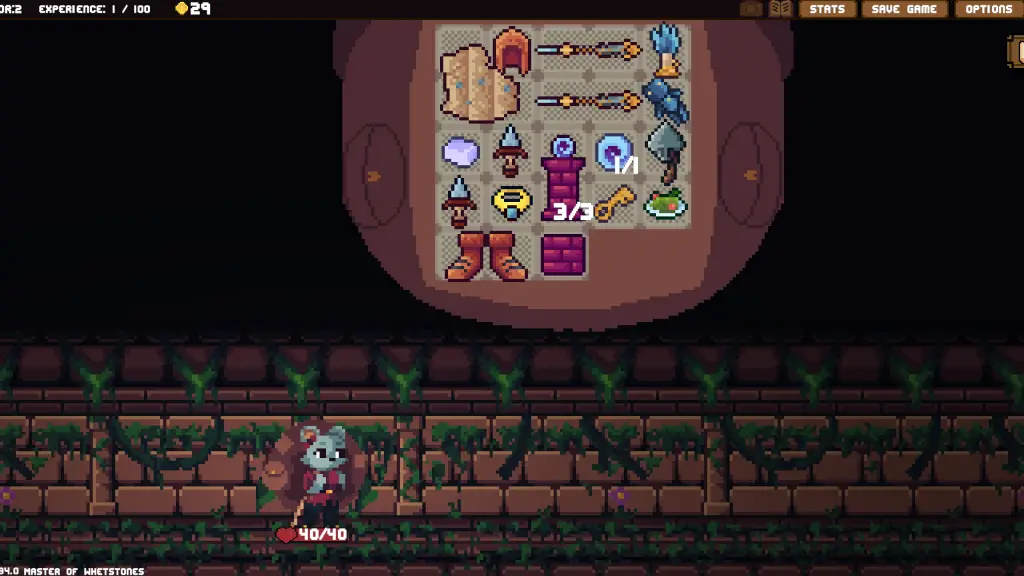
Lastly are the magic items. These usually come in the form of a wand or staff. They are the only one of the three weapon types that don’t rely on action points to use. Instead, they use mana. Mana can be tough to manage because it has to be adjacent to the weapon or something else that is conducive to create a mana network. Mana also does not generate every turn like action points do, so you have to have something else in your backpack that will make more mana to use each turn.
Armor
Next, we will talk about some of the different armor types. Backpack Hero has four main armor types. These include hats, gloves, shirts, and boots. Although it is not classified as armor, I will also include shields in this section since they serve the same purpose.
The majority of hats and helmets prefer to be in the top row of your backpack. That is where they will get the most benefit. Some might not even work unless they are in the top row. Each turn, they will provide a small defense boost for the spaces below them in that column.
Gloves usually want to be in the far right or far left, depending on which hand it goes on. These usually only take up one space and provide a small boost in defense per turn. However, there are some unique gloves that take up more space in the backpack but offer great benefits as a trade-off.

Shirts range from tunics to full plate mail. The location in the backpack doesn’t matter all that much. The focus of most shirts is to be next to other armor to boost it each turn. Most shirts provide some base defense from themselves as well.
As I am sure you can guess, the boots prefer to be in the bottom row to have the most benefit. Most boots get a bump in armor per row above it.
Lastly are the shields. The main difference between the shields and the rest of the armor is that it does not provide defense at every turn. Instead, the shield uses action points to provide additional defense for that turn. The payoff is that shields usually provide quite a bit more defense than armor.
Accessories
Now, let’s talk a little bit about items that fall into the accessories category. Similar to shirts, these items usually focus on providing benefits to the items around them. Some examples include +1 damage to all weapons in this column, or all adjacent consumables giving +5 health on use. Most accessories only take up a single 1×1 space, so finding a spot in your backpack isn’t too hard. The trick is finding the right spot for the most benefit.
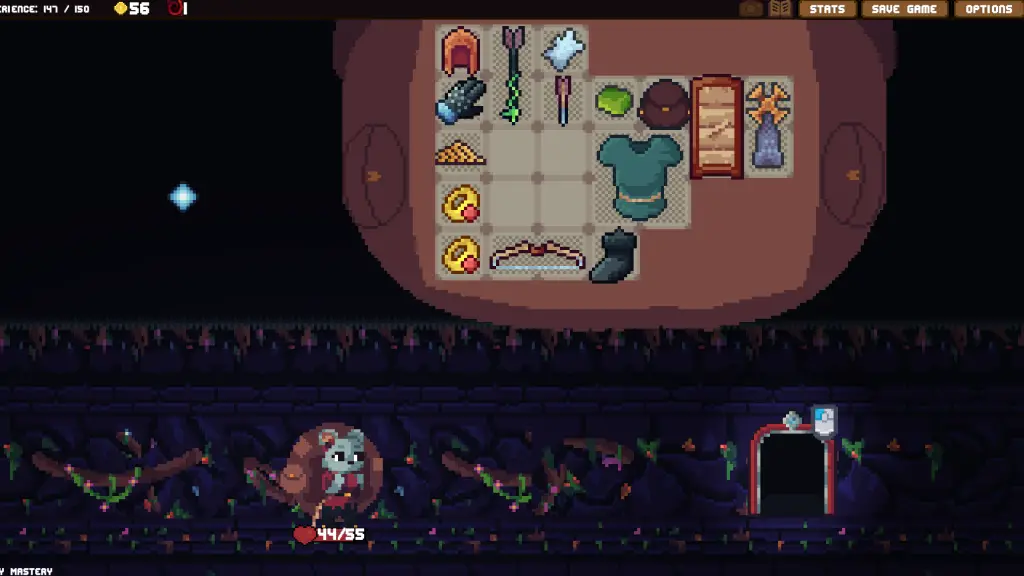
Consumables
Consumables in Backpack Hero are any items that have a one-time use. This can be something that heals you, provides additional action points, or even a single-use weapon such as a shuriken. Most consumable items only take up a single 1×1 space in your bag. There are a few that take up more space, but they are always worth keeping if you have the space.
Positioning
So, we talked a little about all these different items, but the focus in Backpack Hero isn’t about collecting; it is about managing. What does that mean? Well, your backpack is very limited in space. As mentioned, you start with just a 3×3 grid to place items on. You will slowly grow the size of your backpack by a few spaces each time you level up. That doesn’t happen very often, though. Making sure that you are able to fit the absolute essentials for a successful adventure is key.
It isn’t as simple as placing items wherever there is an opening, though. As I mentioned earlier, some items need to be in specific locations in the backpack, even to work. To make things even more challenging, some items can only be placed in certain areas. Items labeled as heavy will automatically fall to the bottom of the backpack, pushing everything else out of the way. In contrast, floating items will do exactly that: they will float to the top row while forcing other items out of that spot.
Sometimes, finding the perfect fit for everything that you want can take a little time. After a battle, you might finally get the weapon that you have been waiting for. It won’t fit in the current configuration, so you remove everything from the backpack. Then, you put the new weapon in and place the other items around it to get the maximum benefit. That is where Backpack Hero really shines. You can tell that positioning is everything, and the developers spent a lot of time on making every item have a unique fit.
Map
Once everything is in the right spot, you are ready to continue on your adventure. Let’s talk about what that looks like. Each adventure has a procedurally generated map with multiple floors in the dungeon to explore. You will move your character around the map to the different points of interest before exiting the floor. Some of the points of interest on the map include enemies, chests, and various events.

Each dungeon has enemy characters specific to that location. All the enemies feel different and have specialized abilities. They range in group sizes with different strategies. We will talk more about the enemies in the combat section.
Throughout each dungeon, there are different types of treasure chests that can be discovered. Most of them are free to open. The items inside are not limited, like after combat, so feel free to take as many as you can. There are also locked chests that require a key with valuable loot inside. Lastly, there are a few cursed chests that you might come across. Open at your own risk.
Most of the other locations on the map can be categorized into events. These range from a blacksmith that will upgrade your gear, a vision of what’s to come, and even mini-games like Spin the Wheel for a free item. It is well worth exploring all of the points of interest on each level. You never know what you might find, and they are almost always beneficial.
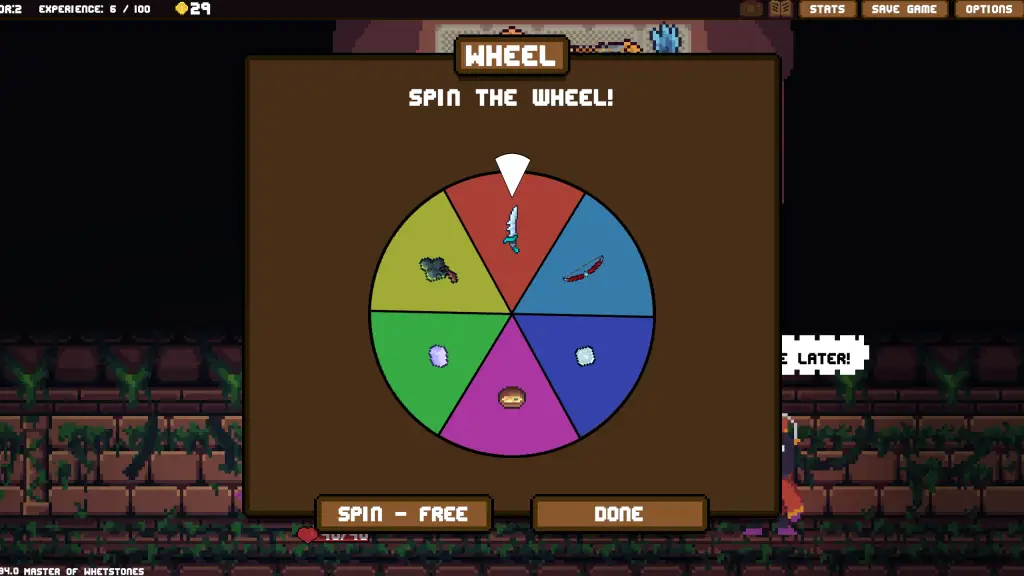
Combat
This leads us into combat. The majority of the points of interest on each map are going to be combat encounters. Unlike all the other points on the map, combat is the only one that blocks your path. Meaning you have to engage in combat to progress.
Like most turn-based roguelite games, Backpack Hero does combat based on an action point system. Each turn, your character has a base of 3 action points that you can use on different items in your bag to attack or defend with. The defense does not carry over per round, so keep that in mind. There are also magic items mentioned earlier, that use mana instead of action points. Figuring out how to use a combination of both can make short work of your enemies.
There seems to be a wide variety of enemies to come across. Some focus on direct damage, while others steal your gold or healing allies in their party. None of the encounters felt too difficult as long as you had enough defense to mitigate the damage coming in. The only characters that ever put up a challenge were some of the bosses. Every third floor in the dungeon is a boss level. These typically have quite a bit more health than the normal enemies and abilities like calling reinforcements or multiple stages.
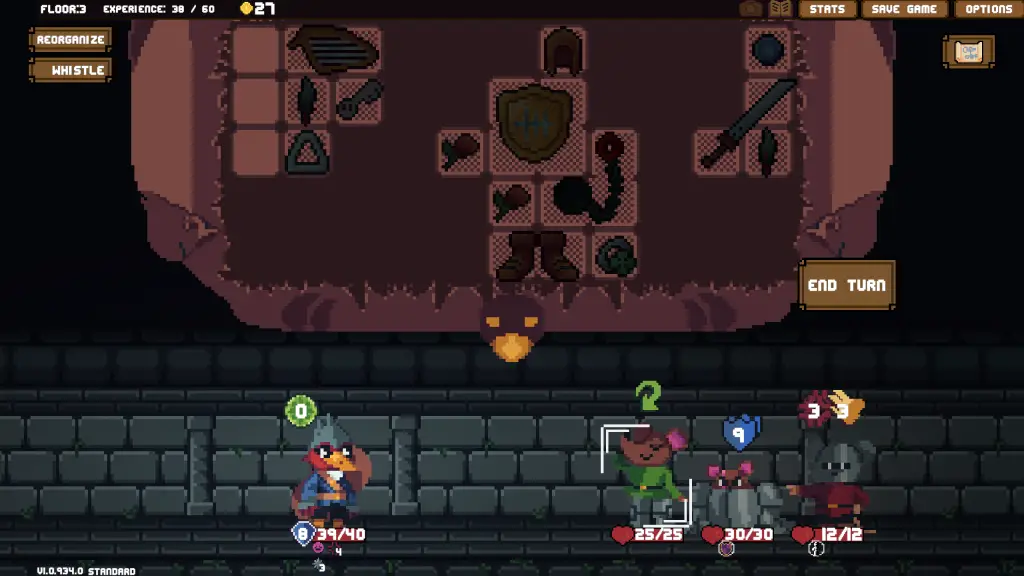
Overall, the combat felt more on the casual side. This gives you the freedom to experiment with items in your backpack without worrying about finding a perfect setup to finish a run. I never felt like I had to have a specific item in my bag each run to be successful. I could just focus on trying out new combinations each time.
Story Mode
There are two different modes that you can play in Backpack Hero. The Story Mode is for the players who want to slowly unlock items as they go. You will have to go on different quests to unlock specific items. These quests usually have unique starting gear that replaces your standard sword and shield starting items. Some of the quests will also have a specific item that you have to keep in your inventory for the entire adventure. Any items still in your bag when you end the run will come with you to town. Then, they can be sold or used to unlock additional items.
Story Mode breaks up the combat with a city-building feature between each adventure in the dungeon. Aside from selling items in the shop, you can rebuild a destroyed town. Different buildings will allow you to unlock certain items or gather resources for further development while you are in the dungeon. As you progress through the story, you will unlock things like items, buildings, events, and even new characters to play.
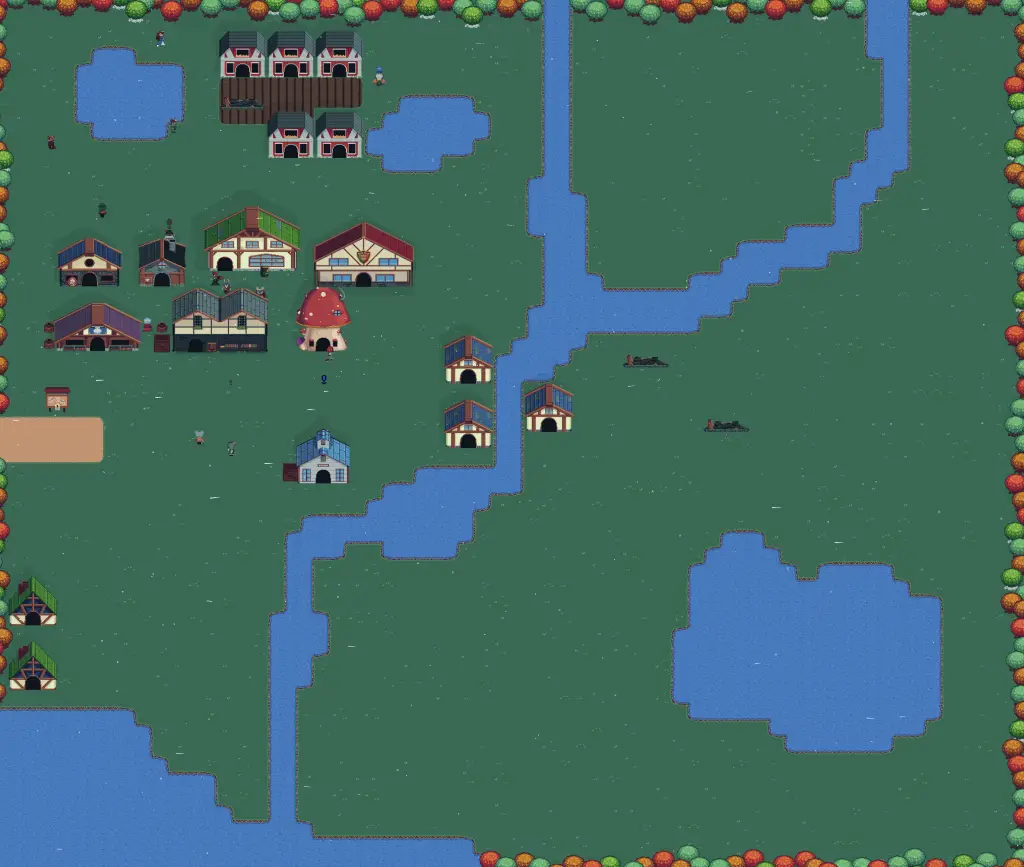
Quick Game Mode
If you want to skip the town building and jump right into the action, then check out the Quick Game mode. Here, you will have every character and item unlocked. You simply pick your character, select a quest, and you are off to the dungeons. This mode is nice if you are just looking for a quick play session or want to experiment with characters that you haven’t unlocked in the Story Mode yet.
Characters
Speaking of characters, there are five playable characters in Backpack Hero. Each character plays very differently from the next. I will talk about three of the characters here and leave the other two for you to discover. The first three characters are Purse, Satchel, and Tote.
Purse is the main character in the story mode. She is a peppy rat from the poor village in Oakshire Forest. Her magical backpack starts out as a 3×3 grid, which expands out as she levels up. She is a jack of all trades and can use any combination of items in her bag to adventure through the dungeon.
Next, we have Satchel. He is the son of a noble bird family who is on the run from the evil Crow King. Satchel has a bag with an 11×5 grid, starting with some spaces in the middle. When leveling up, he gets patterns he can place in his backpack to create separate pockets. Some items benefit from being in different pockets. Satchel also has a unique item type called instrument. These items can be used to charm an enemy. Once the charm on an enemy is higher than their health, they will switch to Satchel’s side during that combat.
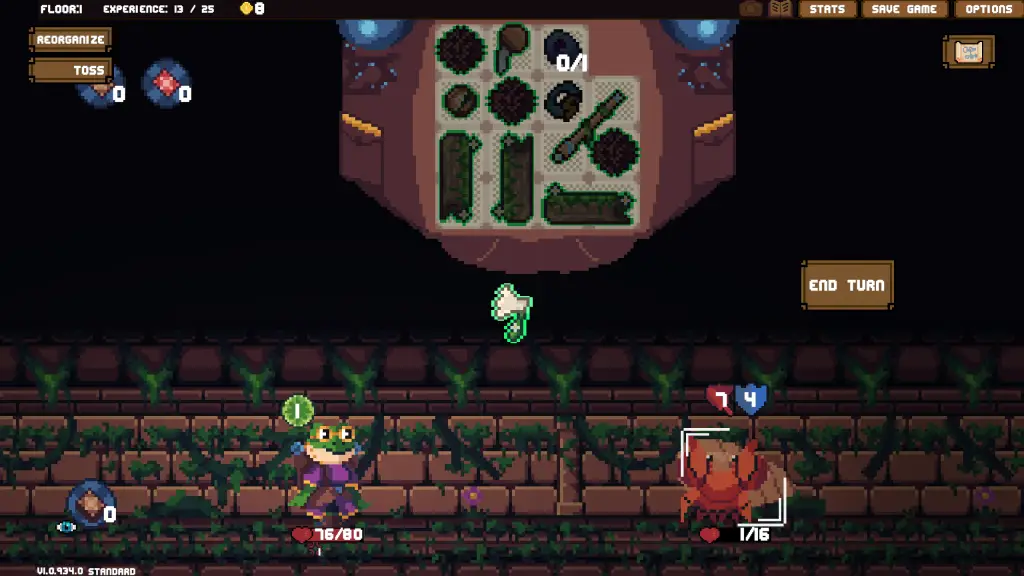
Lastly, we have Tote. She was banished by the Elder Frogs. Her backpack was blessed by the Dreaming Tree and spawns carvings each turn. Similar to Purse, she starts with a 3×3 grid that expands out as she levels up. Tote completely changes the item management when it comes to combat, though. Instead of filling your pack before the battle, Tote creates items that you place in her backpack each turn. The abilities of these items take effect when placed. Once her pack is full, you can toss the items out to do one damage per item. This can take a minute to get used to.
The last two characters are just as interesting as these three. I don’t want to spoil all the fun, though. So you will have to find out for yourself what makes the last two unique to play.
Mods
There is one last thing that I wanted to mention before wrapping everything up. Backpack Hero has mod support. For those who don’t know what that means, mods are modifications to the game that the community has made. When a game has mod support, that means that you can easily implement those community changes into the game.
For Backpack Hero, the mods are all custom items that the community has made. Why is this important? Mods mean more replayability. You can add new items to your game for free and get more out of the game if you want weapons from Terraria, done. Suppose you want a pack of holiday gear for Christmas, done, You could even create your own items and share them for others to add.
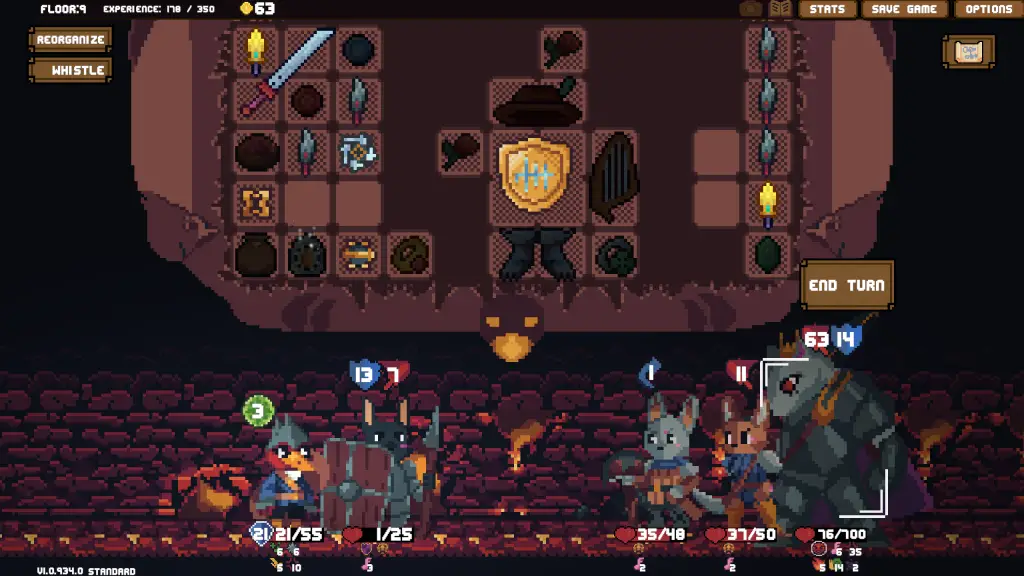
Conclusion
So, at the end of the day, is Backpack Hero the next big thing in roguelite games? It might be. Backpack Hero definitely changes the formula that we are used to. There are plenty of roguelite deckbuilder games that deal with hand management, but that is nothing like the item management that is going on here. Especially since elements like weird shapes and items have to be in specific spots in the backpack. The game’s clear focus is finding the perfect spot for everything.
All in all, the game is really fun. I enjoyed the small game aspect, and it ran great on my Steam Deck. It is a game I am sure I will come back to when I am looking for something light to play. If you are looking for something out of the norm, then definitely check this one out. However, if you are looking for something with a lot of depth, then this game might not be for you. As I mentioned earlier, combat is light. You aren’t going to find any gritting-your-teeth kind of battles here. It is a nice change of pace from the bigger games, though.
Backpack Hero is available now on Steam, so go check it out.
Thank you to the developers at Jaspel for the review key.









